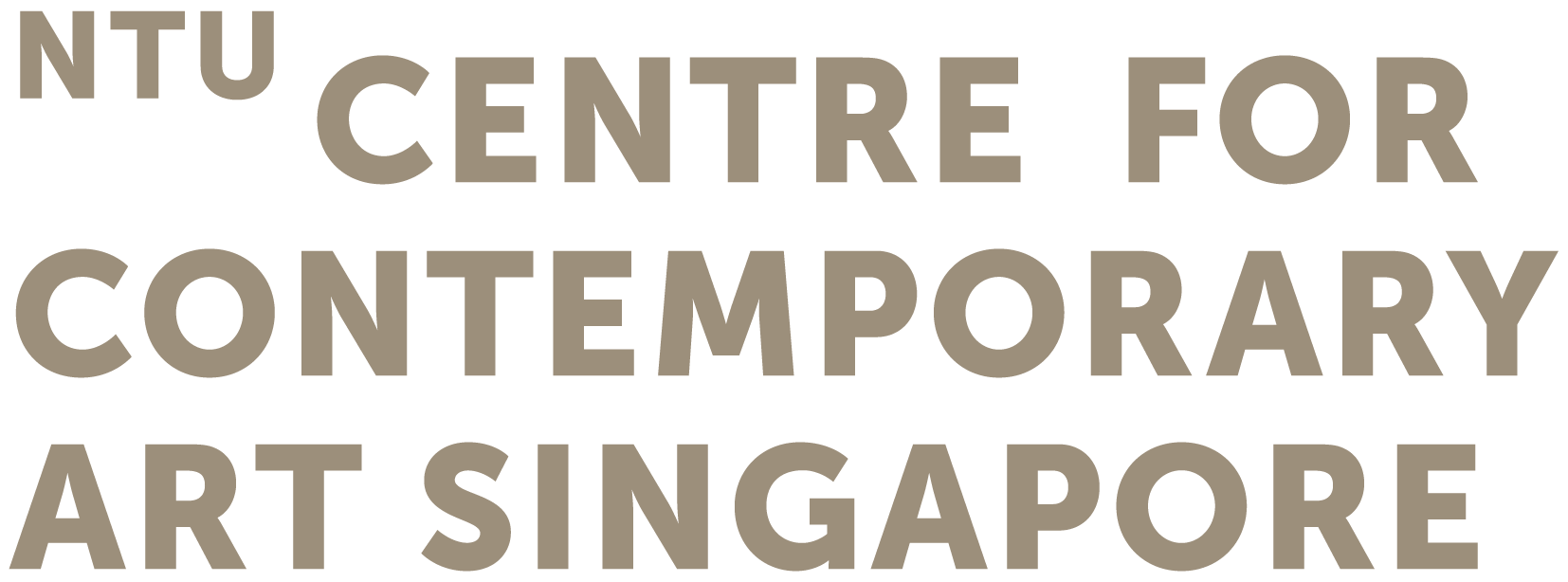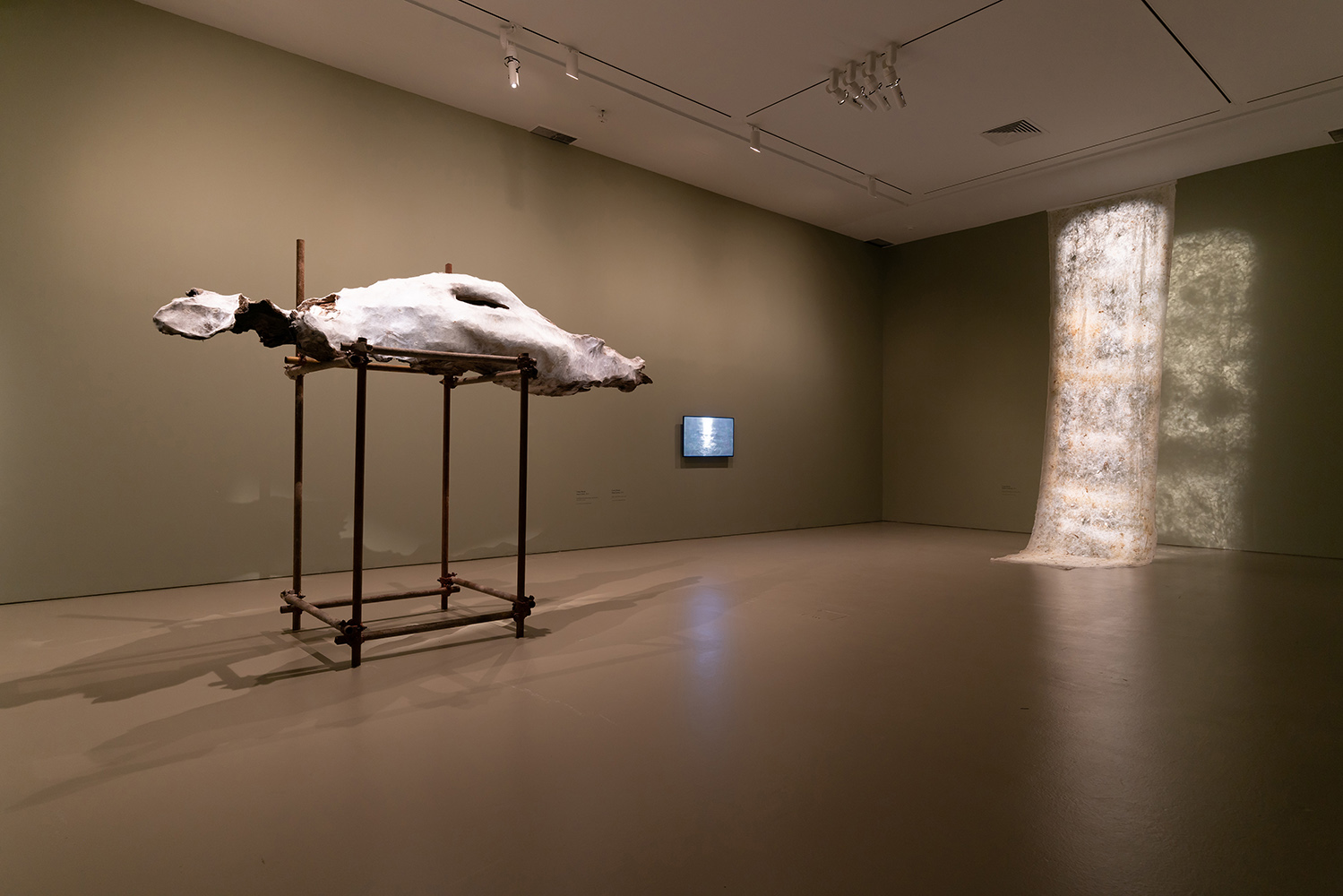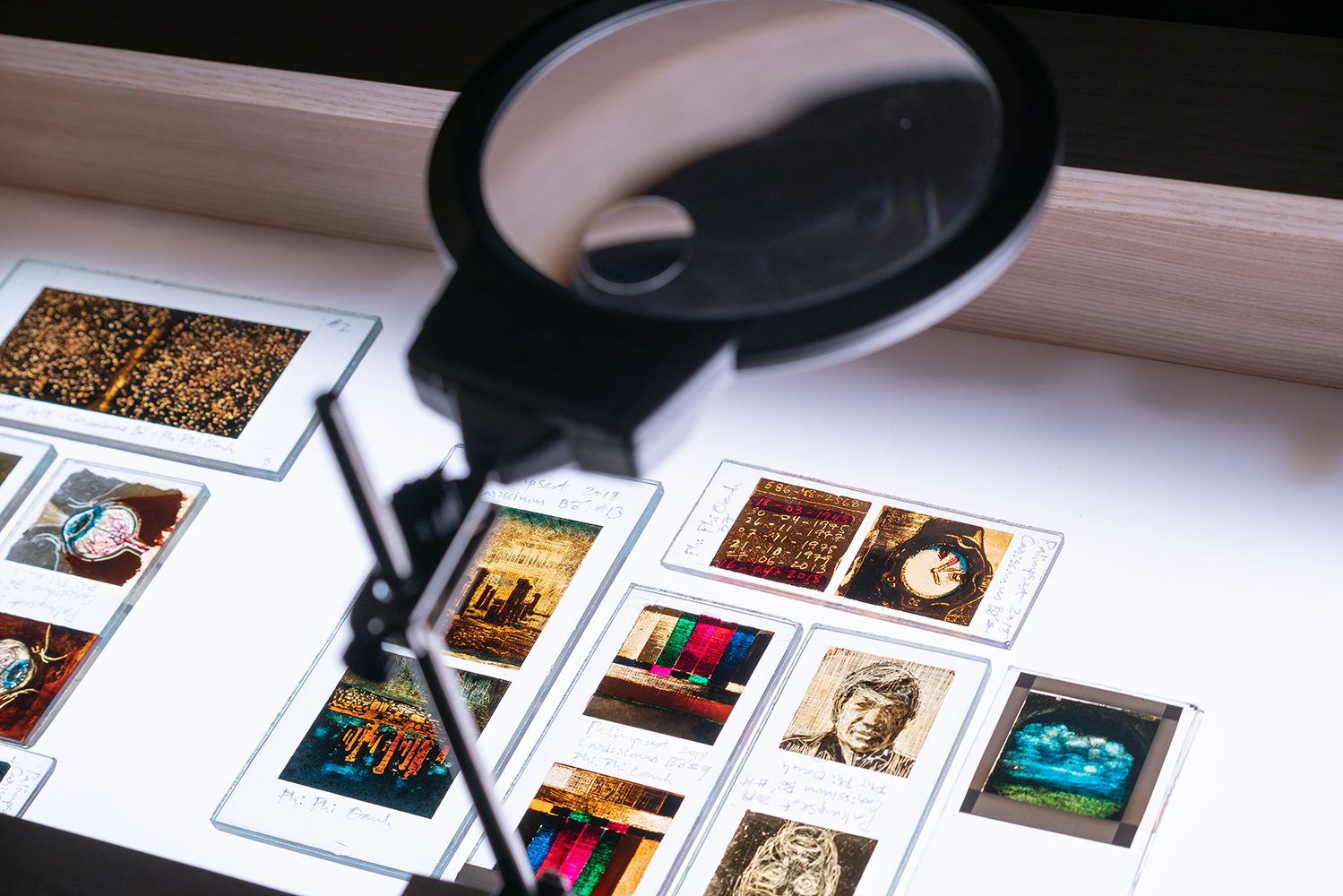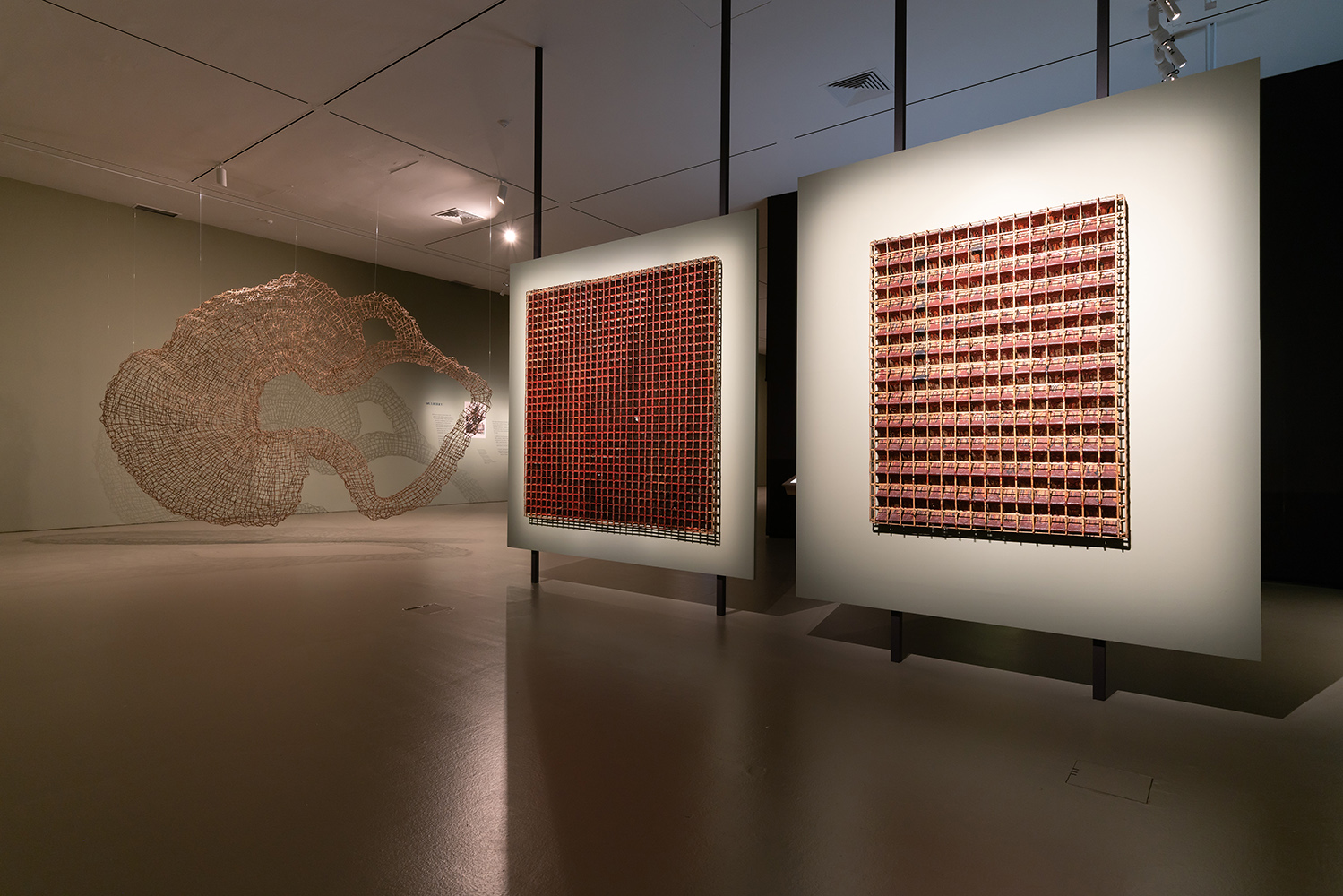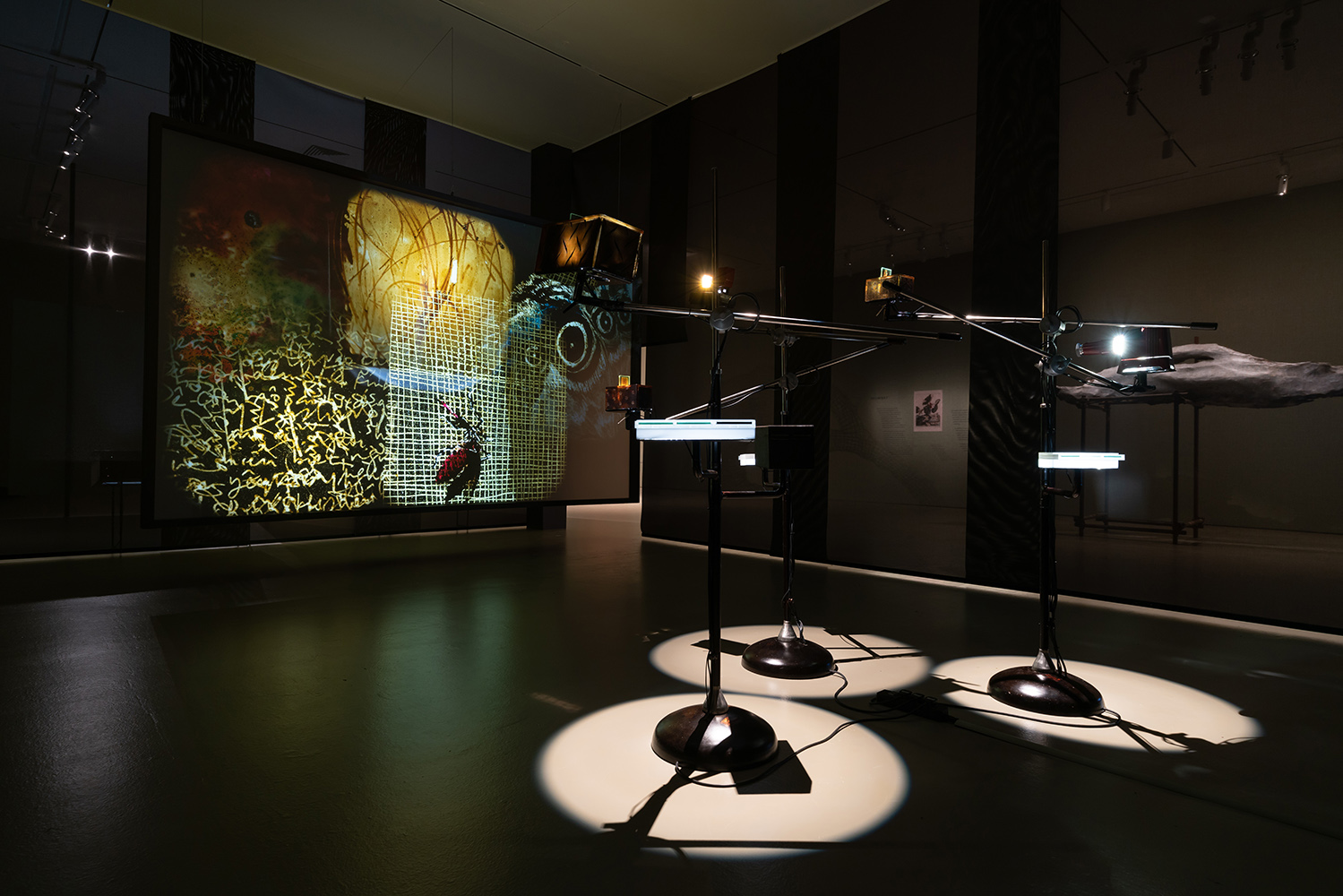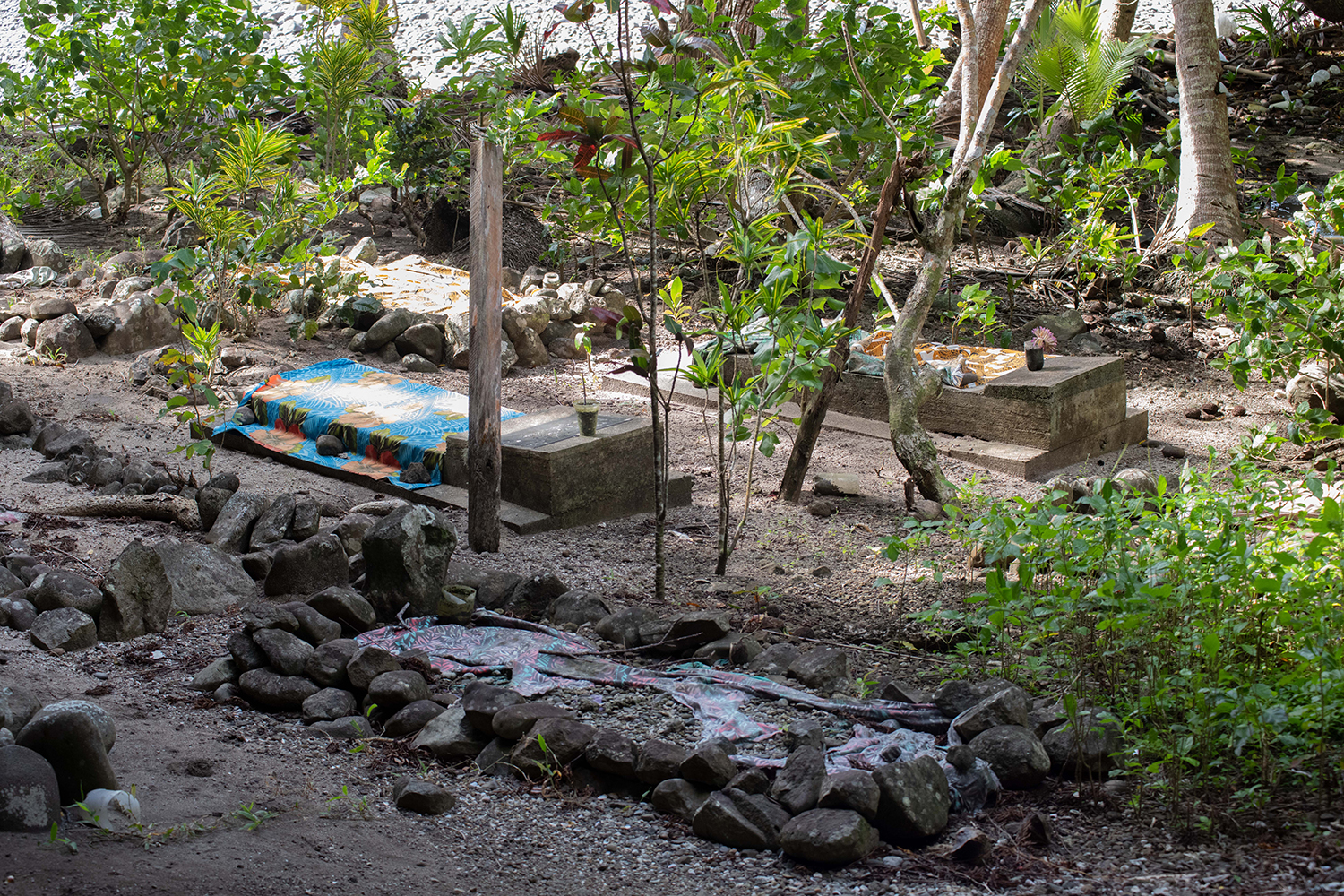This twofold exhibition marks the conclusion of the eponymous research project led by Principal Investigator Ute Meta Bauer at NTU ADM. The inquiry started by asking: how has the slow erosion of diverse, multicultural, and more-than-human ways of living over time impacted the environments in which we live, and what are the longer-term consequences on habitats? Can we begin again with culture, to induce a necessary paradigm shift in the way we think about and respond to the climate crisis? Extending connections and conversations seeded during the inaugural cycle of TBA21–Academy’s The Current fellowship programme led by Bauer from 2015 to 2018, Climate Crisis and Cultural Loss continues to build archipelagic networks across the Alliance of Small Island Developing States, deepening existing collaborations with Oceania Centre for Arts, Culture and Pacific Studies in Fiji, and developing new ones further in the South Pacific Ocean, through the art and media non-profit organisation Further Arts in Vanuatu.
Bridging conversations from the Pacific to Singapore in the Riau Archipelago, former fellows of TBA21–Academy’s The Current and current research collaborators artist Nabil Ahmed, social anthropologist Guigone Camus, artist Kristy H.A. Kang, legal scholar Hervé Raimana Lallemant-Moe, and artists Armin Linke and Lisa Rave, join Singapore-based researchers Co-Investigator Yun Sang-Ho and members of the Earth Observatory of Singapore – Remote Sensing Lab (EOS–RS), NTU ADM research staff Soh Kay Min and Ng Mei Jia, historian Jonathan Galka, and community organiser Firdaus Sani, as they explore the impacts of extreme weather, rising seas, climate displacement, ocean resource extraction, and the disappearance of material cultural traditions, occurring across what the visionary Pacific thinker Epeli Hau’ofa has termed “our sea of islands.” Featuring interviews, data visualisations, documentation, writings, and artisanal crafts made in collaboration with or generously gifted to the research team by knowledge bearers, community leaders, scientists, scholars, and artists, including writer and curator Frances Vaka’uta, masi artist Igatolo Latu,human rights defender Anne Pakoa and anthropologist Cynthia Chou, the exhibitions present the rich, complex, and multi-layered research findings accumulated over three years, since the Climate Crisis and Cultural Loss project first started in 2021.
At TBA21–Academy’s Ocean Space, the Climate Crisis and Cultural Loss research inquiry sits adjacent to the exhibition Restor(y)ing Oceania, comprising two new site-specific commissions by Latai Taumoepeau and Elisapeta Hinemoa Heta. Curated by Bougainville-born artist Taloi Havini, whose curatorial vision is guided by an ancestral call-and-response method, the exhibition materialises as a search for solidarity and kinship in uncertain times, in order to slow down the clock on extraction and counter it with reverence for the life of the Ocean.
At ADM Gallery, Climate Crisis and Cultural Loss is presented alongside the companion show Sensing Nature, curated by Gallery Director Michelle Ho. The exhibition showcases artists representing diverse disciplines, each offering their interpretation of the natural world and its intersection with urban life. Through reflection and experimentation, these works invite viewers to reassess our perceptions and behaviors toward the environment and phenomena beyond human influence. They advocate for a renewed understanding of society’s connection to nature and the land.
Climate Crisis and Cultural Loss is supported by the Ministry of Education, Singapore, under its Academic Research Fund Tier 2 grant. The research presentation at Ocean Space coincides with the 60th International Art Biennale in Venice, Italy, with public programmes taking place through the exhibition durations in both Venice and Singapore.
